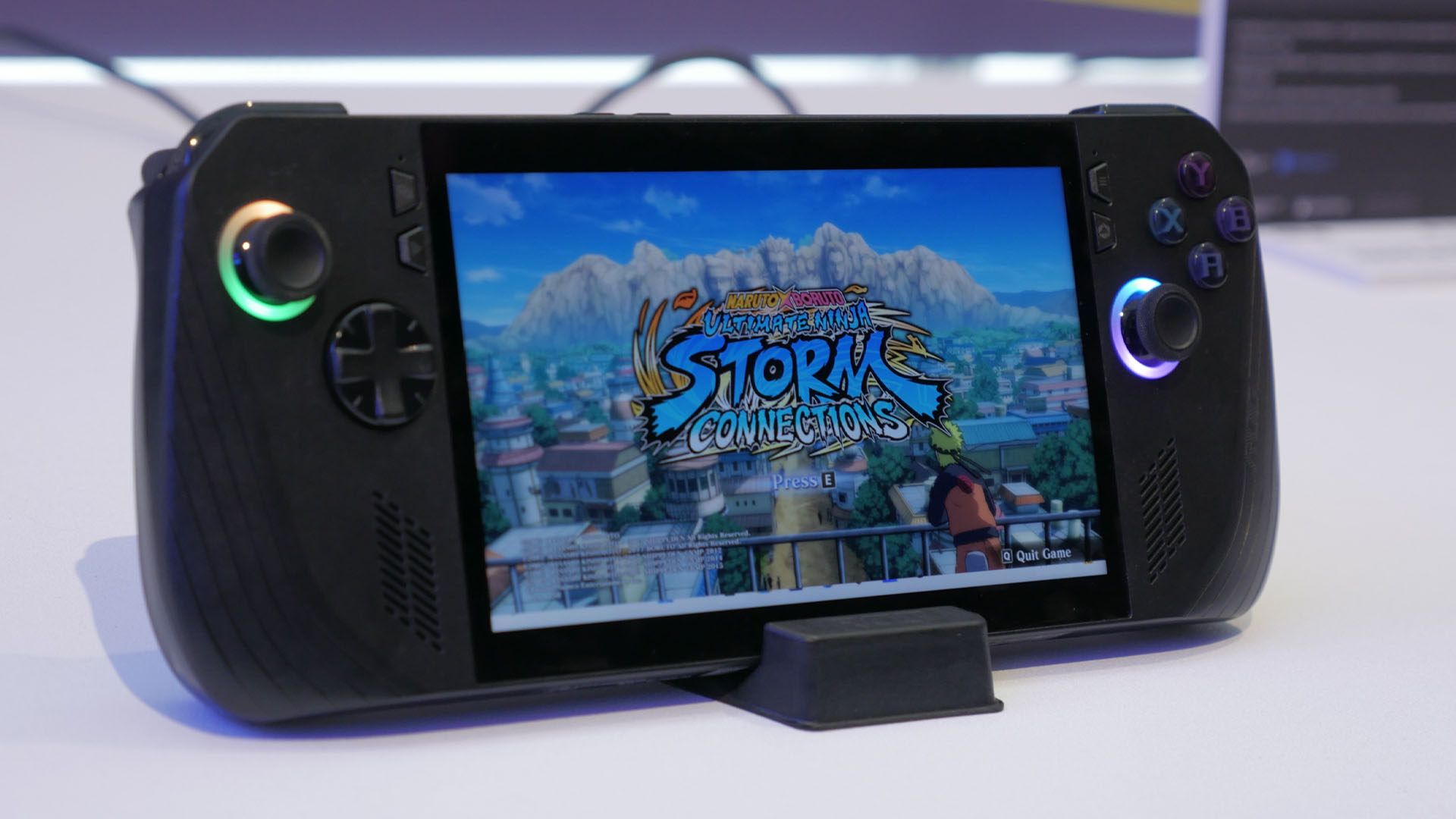It’s official, the Asus ROG Ally X is here and available for pre-order now. Asus unveiled the new gaming handheld at Computex and it is packed with even more upgrades than we expected, including a massive boost in battery life.
While it’s too early to say whether the Asus Ally X’s improvements are enough to make it a contender to knock the Steam Deck OLED of the top of our best handheld gaming PC guide, the sheer number of improvements is sure to make a tempting prospect for many buyers.
The most obvious change with the Ally X is that it has switched from the white finish of the original Ally to a black finish, with each version only available in one color. This will make for a handheld that hides the ravages of a life on the road and in your hands better.
Slight stylistic tweaks aside, the biggest upgrade with the Ally X is its doubled battery size, from 40Whr to 80Whr – yes the Ally X leaks were true. The battery life of the original model wasn’t terrible but was behind its chief rival the Steam Deck, so an improvement as large as this could even put it ahead.
Despite this big increase in battery capacity, the ROG Ally X isn’t that much heavier than the Ally thanks to Asus shaving weight from elsewhere on the device. Even the fan has shrunk, dropping 23% in size while maintaining up to 10% higher airflow thanks to using thinner fan blades. A third exhaust area also aids venting heat.
Other internal improvements include a default 1TB of storage with a move to using a “full-size” 2280 format SSD, greatly increasing the range of SSDs you’ll be able to fit in the device. RAM allocation has also increased to a huge 24GB LPDDRX 7500 – more than many gaming PCs.
Externally, there are a host of ergonomic improvements too, with rounder handles and triggers, which are legitimately more comfortable to hold. The D-pad has switch to a “precision” eight-way design too and the buttons have been slightly rearranged so they’re easier to reach. Conversely, the rear macro buttons are smaller and less easy to hit accidentally.
In our short time with the device, all these small changes did feel like they added up to making for a more comfortable device to use overall, though the extra weight definitely isn’t a welcome addition.
What we couldn’t help but feel is slight disappointment that the screen hasn’t switched to OLED, even if it wasn’t quite as dazzling an OLED as that on the Steam Deck OLED. The obvious drop in contrast and color saturation when viewing the Ally X from an angle and general lack of pop when viewed side by side with the Steam Deck OLED is plain to see. I guess there has to be something for Asus to upgrade with the Ally 2.







